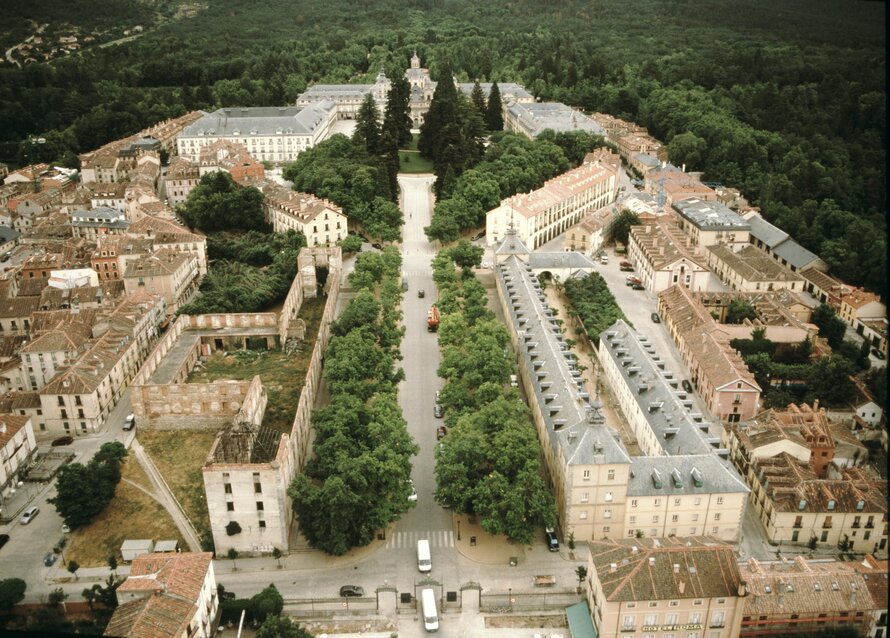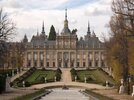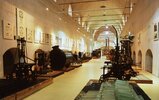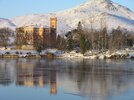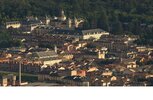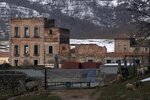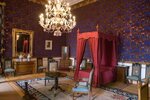The royal site of San Ildefonso, Segovia
The Town Council of the Royal Site of San Ildefonso, in its development policy and activity, has in recent years given priority to the conservation, recovery, dissemination, revaluation and revitalization of its Cultural Heritage, considering the latter to be a strategic axis of ...
Read more
Project details
| Title: | The royal site of San Ildefonso, Segovia |
|---|---|
| Entr. year: | 2010 |
| Result: | Award |
| Country: | Spain |
| Town: | Segovia |
| Category type: | building conservation |
| Notes: | MISSING DOSSIER |
| Building type/ Project type: | residential building |
| Former use: | Summer residence |
| Built: | 18th century |
| Architect / Proj.leader: | Filippo Juvarra |
| The Jury's citation: | "This project is awarded for the continuous work and policy undertaken by the municipality for the conservation and enhancement of the Royal Site of San Ildefonso. For the dynamic integration for the future of the wonderful landscape with the Royal buildings and gardens which give a real and unique view of what a royal site in Spain was and for the good integration of all these elements, together with the historic centre, in a wise and generous town planning." |
| GPS: | 40°54'7,6"N; 4°0'26,2"W |
| Web, Links: | www.realsitio.com/ |
Description:
The Town Council of the Royal Site of San Ildefonso, in its development policy and activity, has in recent years given priority to the conservation, recovery, dissemination, revaluation and revitalization of its Cultural Heritage, considering the latter to be a strategic axis of local development and an alternative means of protection against less sustainable forms of progress. With its important resources, such as the famous Valsaín pine forest, and a renowned monumental, natural and cultural heritage, the Royal Site of San Ildefonso, as living proof of the philosophy of the Enlightenment, is where Charles III made planning the tool that enabled him to achieve a judicious balance of historical heritage and modernity, of economic growth, progress and quality living with respect for the natural environment. This model was recovered after a long period of retrogression in the years following the Civil War, when the nation's heritage was allowed to lapse into a state of total ruin and abandonment. Starting in the sixteenth, and especially from the eighteenth century, the most important decisions of the times were taken in this Royal Site during the summer stays here by the Spanish Court and prominent foreign envoys. In parallel with the construction of the Royal Palace at La Granja, a new model of town came into being (with the first water supply system, sanitation network, hospitals, extramural cemeteries, etc.), the town thus constituting the laboratory where such innovations were implemented, before their introduction to the Court in Madrid, to improve the quality of life. This is the context in which the ultimate goal of this project should be considered: the recovery, not just of a single element of local heritage, but of the entire body of riches that constitute the Site, both tangible and intangible. We seek to regain the splendour that this influential spot once had, centuries ago, with the involvement of numerous institutions and individual participants, without whose efforts our ambitions could never be achieved. The Town Hall of the Royal Site of San Ildefonso is an appropriate intermediary, enabling intercommunication among all the agents working together on this ambitious project of local revival. On this complex path towards achieving our ambitions, many difficulties have been encountered and overcome, such as the compulsory purchase operations that the Town Hall was obliged to make, from the Spanish State, of landmark buildings such as those of the Royal Halberdier Corps and the Princes' House. Today, both of these are incorporated into the local productive system, as a Congress Centre and a Parador (hotel), respectively - far from the idea once proposed of converting them into luxury second homes for the wealthy. Another obstacle encountered lay in the very singularity of the Royal Site; at its constitution, this municipality had no public possessions at all - neither a Town Hall, nor a water supply network, nor anything else. All was the property of the Crown, or the Republic, or of the State, depending on the epoch in question. It was not until the 1980s that the Town Hall of the Royal Site of San Ildefonso finally received its own municipal building, and public land for its use and activities, this process subsequently being extended to the streets of the town and its water supply system. The name of the municipality "the Royal Site of San Ildefonso" is another element of cultural heritage, in this case, an intangible one, that has had to be recovered. A meeting of the Town Council debated and passed a motion in this respect on 26 February of this year, initiating the procedures to advance this question before the competent offices of the Spanish administration.
Similar projects
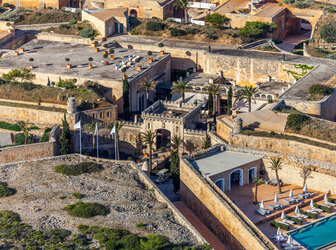
19th century
19th century
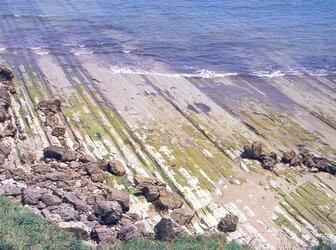

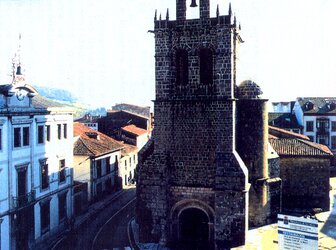
16th century
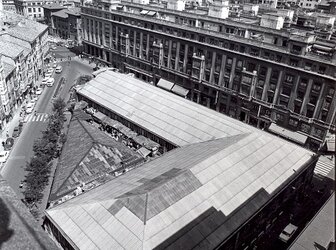

11th century
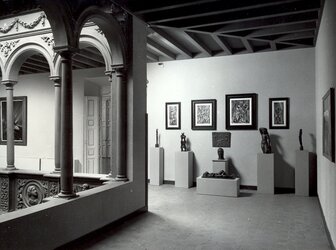
16th century
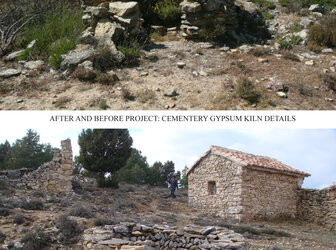

15th century

20th century
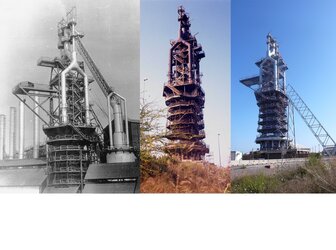
1922-1926
